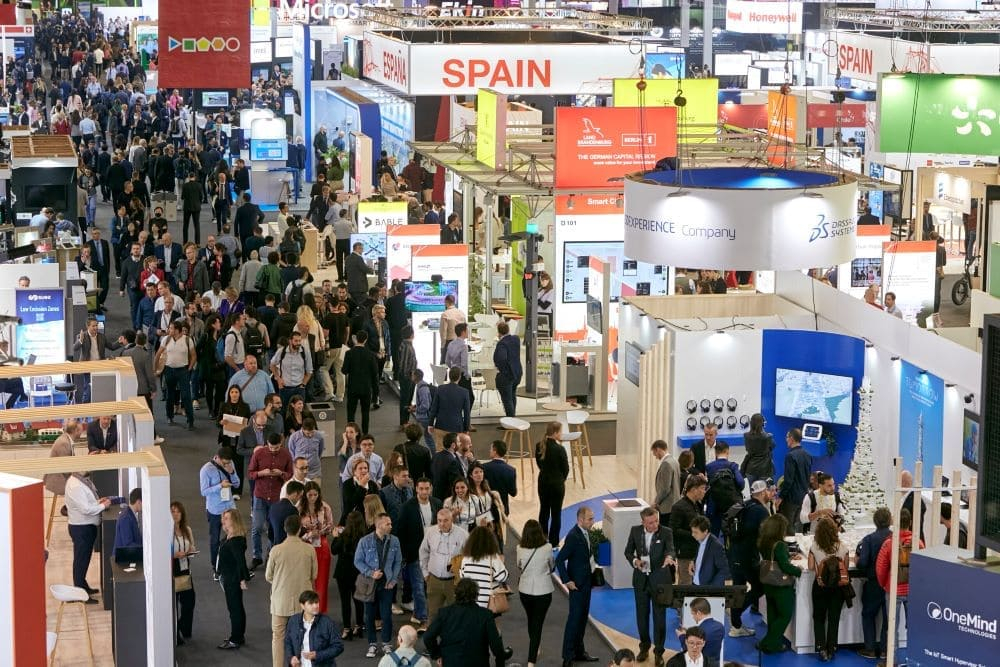This article is also available in Italian / Questo articolo è disponibile anche in italiano
By 2050, the global population will reach 10 billion, with nearly 70% living in urban areas. Cities, therefore, will need to become ever more sustainable, resilient, connected, and secure. To confront urbanisation’s challenges and demands and to explore its future course, the Smart City Expo World Congress 2024 (SCEWC) took place in Barcelona from the 5th to the 7th of November. Since its inception in 2011, this event has gathered experts, political leaders, businesses, and innovators from around the globe to discuss and drive the future of smart cities. The primary aim is to foster collaboration at all levels and across sectors, including public-private partnerships, to address today’s urban challenges, encouraging the growth of greener, more inclusive, and interconnected cities.
“The outcome of this year’s event has been particularly significant, not only because we set new records in terms of dimensions and attendance, but also because we proved that our focus is key to improving citizens’ lives worldwide,” declared Ugo Valenti, The Director of Smart City Expo World Congress “The fact that some of the solutions presented here helped in the response to the Valencia floodings is proof that our efforts are making a tangible difference. This event has certified that our mission to foster sustainable and liveable cities is more crucial than ever.” All in all, an opportunity to rethink our way of life, using innovation and collaboration to cultivate a better relationship with the planet and communities.
The event for better cities
With over 25,000 participants from around 130 countries, representing more than 850 cities, the Smart City Expo World Congress reaffirmed its position as a leading global platform for debate and collaboration on smart cities. At SCEWC 2024, discussions spanned a wide range of topics, including integrating innovative technologies to optimise urban services and reduce environmental impact, sustainable mobility, the blue economy, artificial intelligence, urban planning, and the green tech sector.
This also includes robotics, with DEEP Robotics' robot dog − a charming, dog-like quadruped fitted with cameras and thermal sensors, capable of walking, running, and jumping. “The potential applications for this technology are broad and varied, ranging from life-saving rescue operations to construction, from support in entertainment to caregiving, particularly for elderly individuals in need of companionship and assistance,” says Eleanor Tang-Smith, COO of BOW, a UK-based robotics software and services company.
This year’s congress was attended by more than 1,100 exhibitors and over 600 speakers, offering an in-depth exploration of how cities can be reimagined to meet people’s genuine needs. The event bridged technological, environmental, social, and economic dimensions, by not only analysing current trends but also striving to anticipate the needs of cities in the decades ahead.
As Carlo Battisti, President of Living Future Europe, points out “In urban development, it is crucial to involve diverse disciplines from the outset of each project, allowing complexities to be addressed in a coordinated manner and future challenges to be anticipated. It’s not merely about energy efficiency; the approach must be holistic and integrated, bringing together everyone from designers to builders to develop practical, replicable solutions.” And as in any sphere of the transition, accuracy in data is crucial. “We need concrete metrics to assess the effectiveness of our actions − relying on theoretical data without measuring real impact is like aiming at a target that constantly shifts. Only with solid figures can we truly understand whether we’re making progress.”
Nature goes to the city
When discussing urban areas, it is crucial to remember the importance of integrating nature within cities. Among the exhibitors was the Italian company 3Bee, which, as Silvia Moser, Biodiversity Strategist, explains, "has created a digital platform to analyse various urban contexts, collecting data on hydrogeological and climatic risks and the area of biodiversity. Thanks to these parameters, it is possible to identify critical areas, such as heat islands and those at risk of flooding, and to assess the effectiveness of interventions through KPIs. A special focus is on biodiversity, with the incorporation of resilient native plants to create Nature-based Solutions to be integrated in cities. In addition, studies consider proximity to protected areas and ecological networks, to reproduce small habitats within our cities that can increase naturalness and connectivity," she concludes.
Also emphasising the need for a synergy between nature and technology was Bioo, a biotechnology company using proprietary technologies to generate electricity from nature. For example, Bioo Lumina, harnesses the natural bioluminescence of fungi, algae, and insects through a biocompatible phosphorescent compound that is applied to the dermis of plants, accompanying them throughout their lifespan. This technology enables native plant species to become bioluminescent without genetic modification, aiming to reduce light pollution and save energy in urban environments.
Image: Smart City Expo



